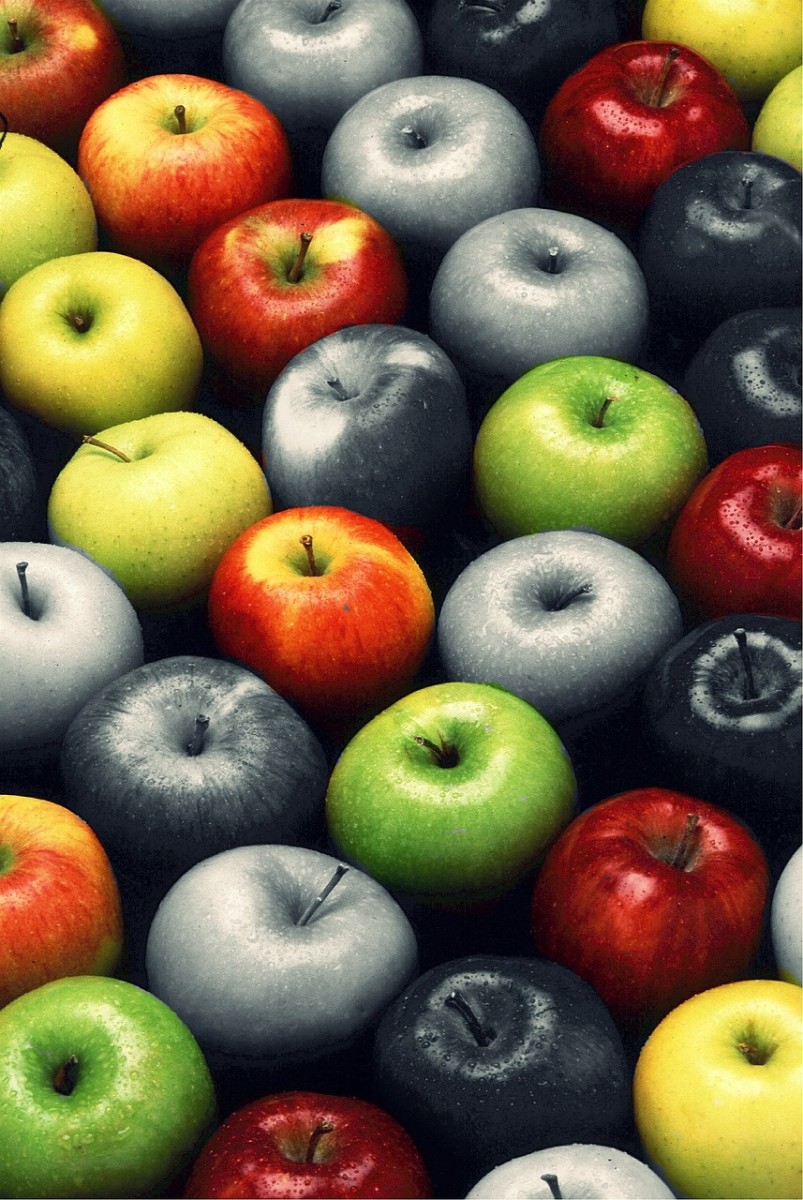Genetic Engineering
For the past thirty years, genetic engineering has been a main topic in heated debates. Scientists propose that genetic engineering far outweighs its risks in benefits and should be further studied. Politicians argue that genetic engineering is largely unethical, harmful, and needs to have strong limitations. Although genetic engineering may wreak benefits to modern civilization, it raises questions of human ethics, morality, and the limitations we need to set to protect humanity.
Genetic engineering is the process of scientifically changing the body. You can change the body by increasing reproduction, cloning, and engineering genes. The church is totally against genetic engineering for the reason that God made all of us different, for a reason. Also, people can be cured when genes are removed and new ones are added. Finally, there are quite a few animals used such as mice and goats. For example, two goats were genetically engineered to breed better milk. By cloning and engineering scientists have found ways to help the body fight diseases. By this method we can in a few more years rid the earth of disease.
Though there is harsh criticism from politicians, scientists continue to press forward saying that genetic engineering is of utmost importance to help and improve society. In many cases, the technology can be applied for life saving purposes. For instance, a child that has a rare disease and needs an organ transplant finds no organs that match him. As a last resort, the parents opt to take cells from the dying child and make a clone. If the clone is successful, the child will have a perfect match for the organ transplant. The initial result is that the parents end up with two healthy children that are more like delayed twins rather than clones (Watchbroit). This type of solution could solve a problem that plagues hospitals today. The lack of organ donors often causes grief and sorrow to the person waiting for a transplant and their family. Cloning can definitely be a safe alternative to what is occurring currently in hospitals now as long as it is closely monitored. In another situation, a husband and a wife both carry a lethal recessive gene and wish to have children. Rather than risk the one in four chances that the child will get the debilitating disease, the parents choose to use the cells of one of the adults and clone a child . This method will help parents stay away from donor gametes and selective abortion. In the end, the parents are happy that they have a healthy child without feeling guilty of having to use a donor gamete or selective abortion.
Though genetic engineering may improve lives by helping humans become more efficient organ donors and aiding troubled parents, scientists also see its benefits in eliminating the world’s diseases. In the year 1971, scientists had only uncovered 15 genes of the human genome. By the mid 1990’s, 2,000 genes of the human genome had been identified by geneticists. Surprisingly enough, it is estimated that only 2% of the human genome is uncovered. If scientists are further able to study this field, they may find the genes that are responsible for critical illnesses such as cancer and Parkinson’s disease by way of Gene Therapy. There are two main types of gene therapy. One method adds normal genes to the person to produce what the patient lacks. The second method involves completely obstructing genes that cause disease. The first method could be used to greatly increase the strength of a person’s immune system or instill an immune system in a person that lacks one. The second method can prevent a disease from expressing itself in a person because the gene is stopped in its dormant state before it can express its harmful effects. Genetic engineering also opens up the possibility to mass-produce chemicals that are otherwise difficult or near impossible to extract. A clear example of this would be interferon, a natural compound linked with the human immune system. Interferon aids in the immune system in thwarting viral attacks from spreading within the body. Although the usefulness of this compound was realized very quickly, it was very difficult to market for the widespread use of the public. This is mainly because, “The chemical is produced by the body in such tiny amounts that it would take the blood from 90,000 donors to provide only one gram of interferon, and even then the product would be only about 1% pure. In 1978, a single dose of impure interferon cost about $50,000 to obtain”. All that changed when a Swiss scientist injected the human interferon gene into bacteria. By cloning the originally engineered bacteria cell, the scientist was able to cheaply mass-produce the rare interferon. The price plummeted from $50,000 dollars for one dose to $1 by the 1980’s. By injecting genes into bacteria to produce recombinant DNA, humans will be able to manufacture and produce vaccines and other important substances such as insulin to a grand scale while minimizing costs.
The steady rise of products in genetic engineering has influenced some speculators to believe that genetic engineering has the potential to increase the global economy. In the year 2025, it is estimated that 20% of the world’s GDP, the equivalent of two trillion dollars, will be in genetic engineering. Genetic programs will be able to enhance animals for recreation and food. For example, a pit bull can be injected with a black Labrador retriever’s gene to produce a pit bull with a friendly nature. Cows will be genetically altered to produce more milk and to produce extra proteins in their milk. Plants can be genetically altered to be resistant to frosts, droughts, diseases, and produce higher yields while containing more protein. Farmers will be able to build in certain flavors, sweeteners, and preservatives to better their crop. The medical industry with the aid of genetic engineering may be able to produce a hefty profit as it prevents and treats 4,000 diseases. All of these products and ideas could spur a new industrial revolution that could help the world economically as a while through the transfer of these goods and services.
Though there seem to be endless benefits of genetic engineering politicians have always debated that some aspects of genetic engineering are unnecessary, unethical, and need to be limited by laws. In a world where countries are always competing to be on top, weapons are mass-produced to protect a nation if it comes to war. Instead of nuclear weapons, many nations are turning to genetically engineered biological weapons. Though genetic engineering can have many good uses, it can also be used to destroy life as effectively as the atomic bomb. Genetically modified microbes and germs could cause unprecedented damage as they are created and used without antidotes to counter them. The microbes will go unchallenged as they infect person after person causing death on a massive scale. Through genetic engineering, horrific diseases such as smallpox will be able to make a comeback and be even stronger than before. Though genetic engineering could prosper well without limitations, there should be laws that limit it to protect humanity against the darker, less seen side of it. (Coates, Joseph F. Hines, Andy. Mahaffie, Bohn B)
Over the past twenty-five years, Christian theologians have argued the religious and moral issues regarding genetic engineering. Many religious leaders believe that genetic engineering is in essence “playing God”. By contemplating Christian religious ideals, the theologians have come to these conclusions: Human beings should not probe the fundamental secrets or mysteries of life, which belong to God. Human beings lack the authority to make certain decisions about the beginning or ending of life. Such decisions are reserved to divine sovereignty. Human beings are fallible and also tend to evaluate actions according to their narrow, partial, and frequently self-interested perspectives. Human beings do not have the knowledge, especially knowledge of outcomes of actions, attributed to divine omniscience. Human beings do not have the power to control the outcomes of actions or processes that is a mark of divine omnipotence (NBAC).
The use of genetically engineering in agriculture and food production has an impact, not only on the environment and biodiversity, but also on human health. Therefore, thorough biosafety assessment requires not only an evaluation of environmental impacts of genetically engineered organisms, but also an assessment of the risks that genetically engineered food pose for the health of consumers. Let us take deeper look at some of the aspects related to genetically engineered foods.
Genetic engineering is in our food; it is on the shelves of our local supermarket; and in test tubes at the laboratory. They are created from the shuffling and manipulating of genes from one species to another. Examples include the transferring of fish to tomatoes or from human to pig. Genetic engineering also includes cloning, which is the attempt to copy a set of DNA from one species and recreating that species. The proper definition of genetic engineering is, “Genetic Engineering, the alteration if an organism’s genetic, or heredity, material to eliminate undesirable characteristics or to produce desirable new ones”. The initial purpose of genetic engineering was to increase plant and animal production, diagnose diseases and improve or invent new medical technologies such as vaccines and other useful drugs. The methods are now being abused. Ronnie Cummins explains it as, a radical new technology, one that breaks down fundamental genetic barriers not only between species, but also between humans, animals, and plants. By combining the genes of dissimilar and unrelated species, permanently altering their genetic codes, novel organisms are created that will pass onto their offspring through heredity. Scientists are now snipping, inserting, recombining, rearranging, editing and programming genetic material. Genetic engineering poses unprecedented ethical and social concerns, as well as serious challenges to the environment, human health, animal welfare, and the future of agriculture.
The first genetically engineered whole product--a tomato--went on the market in 1994. The FDA determined that the new tomato, which could be shipped vine-ripened without rotting rapidly, was as safe as other commercial tomatoes. Since then, more than 50 other genetically engineered foods have been determined by the agency to be as safe as their conventional counterparts.
The Grocery Manufacturers of America estimates that between 70 percent and 75 percent of all processed foods available in U.S. grocery stores may contain ingredients from genetically engineered plants. Breads, cereal, frozen pizzas, hot dogs and soda are just a few of them.
Soybean oil, cottonseed oil and corn syrup are ingredients used extensively in processed foods. Soybeans, cotton and corn dominate the 100 million acres of genetically engineered crops that were planted in the United States in 2003, according to the U.S. Department of Agriculture (USDA). Through genetic engineering, these plants have been made to ward off pests and to tolerate herbicides used to kill weeds. Other crops, such as squash, potatoes, and papaya, have been engineered to resist plant diseases. (Agricultural Biotechnology, 2000)
The facts behind genetic engineering are being covered up and made to seem like a perfectly harmless matter. Some like Bernard Gert, believe, “the potential risks to all of the future descendants of the patient outweigh any benefit to a very small number of persons who might benefit”. Cloning and genetic engineering is Biblically wrong, unethical, dehumanizing, and should be banned or severely limited. (Joseph F)
To fully comprehend the techniques and processes of genetic engineering, it is best to start with the understanding of basic biology and anatomy. A cell is the smallest living unit known to man, and the basic functioning structure of all living matter. Humans are made up of millions of these cells. Each cell is composed of a nucleus, and within the nucleus lie chromosomes. Chromosomes serve as the housing unit for DNA. DNA is what defines an organism and its characteristics. Genetic engineering uses the DNA and a set of techniques to cut up and seal them to any other organism’s genes. There are multiple problems with these procedures, a fish’s genes cannot be sealed with a tomato’s genes and be expected to survive. The methods used are often told as a precise method, the final stage of placing a new gene into the receiving higher organism is lacking both precision and predictability. When the final product is created it cannot be reversed. The general public fears that the resulting product may mutate into infectious forms that cannot be tamed and spread a world wide epidemic. There have already been close examples of this. It has now been proven that allergens have been transferred from one crop to another using the process.
In attempt to increase the nutritional value of soybeans, a genetic engineering firm experimentally transferred a Brazil nut gene producing a nutritious protein into the soybean plant. However, when a study found that the genetically engineered soybeans caused an allergic reaction in people sensitive to Brazil nuts, the project was canceled. It’s apparent that the product of this experiment was proven dangerous and could have been fatal to those severely allergic to the genetically modified soybean.
The numerous potential benefits of this recent technology are very intriguing. Proponents of this technology claim that biotech crops could, or do, reduce pesticide usage, increase yields per acre, raise the nutritional value of food, and require less water to grow. In a recent speech, the US Secretary of Agriculture, Dan Glickman, spoke of how the field of medicine is being transformed by biotech. Human insulin, cancer medications, antibiotics, and vaccines are all products of genetic engineering. A new genetically engineered (GE) drug has the potential to save hemophiliacs from bleeding to death. Scientists are also researching GE bananas that could one day be used to give vaccines to children in third-world countries.
Proponents of genetic engineering also believe that this technology will help the environment. In the article “Monsanto: Playing God, “by Kirkpatrick Sale, some of these benefits are discussed. Monsanto, one of the largest corporations involved in genetic engineering and research, has developed crops that can be sprayed with the powerful herbicide Roundup (also manufactured by Monsanto) without being affected by it. This means that a farmer can spray a field of crops with a chemical that is lethal to virtually all weeds and plants and, as a result, not have to worry about cultivating or plowing. This is beneficial since plowing fields causes much loss of topsoil through wind and water erosion (25 billion tons of topsoil are lost each year). Monsanto claims that by using its "Roundup Ready" seed, the need to plow the ground before planting is greatly reduced, since weeds can be sprayed after the crops are planted. They also assert that using “Roundup Ready " crops and Roundup in combination increases crop yields by five percent, which also benefits the farmer through increased profits. (Sale, Kirkpatrick, 1999)
Probably the most-used argument for genetically engineered food is that it will help solve world hunger. In “How Genetic Engineering Will Save Our Planet, " Shapiro states that 800 million people in the world are so malnourished that they can’t even work or live normal lives. As the population continues to grow by the billions, the demand for food will, too. By some estimates, the world will need two to three times as much food to feed its people than it requires now. For this reason, food production will need to greatly increase to meet these needs, and Shapiro believes that biotech is a large part of the answer.
In the article “Grains of Hope “by J. Madeleine Nash, the argument of world hunger and GM foods are discussed in great detail. Over one million children die each year from vitamin A deficiency, and 350,000 go blind from it. Many poor people in developing countries eat only a few bowls of rice a day, which obviously does not supply all their nutritional requirements. Seeing this, two scientists, Ingo Potrykus and Peter Beyer developed a GM rice seed with genes that enable the plant to produce beta-carotene-enriched rice. Beta-carotene, which is a nutrient found in such foods as carrots, would supply vitamin A and also benefit the immune system. A deal was struck with a British biotech corporation to give Asian farmers the GM rice seed for free, but the efforts to distribute the seed have been protested by anti-GM food activists. They claim that it would make third-world countries even more dependent on the United States and other successful countries.
However, even with all of these benefits and potential solutions that genetic engineering offers, there has still been a tremendous amount of public outcry and protest. In a recent speech, US Secretary of Agriculture, Dan Glickman, shared an experience he had had with the protests: "When I chaired the US delegation to the World Food Conference in Rome in 1998, I got pelted with genetically modified soybeans by naked protesters”. Protesters have a number of concerns with genetic engineering and what it may cause. (Kilner, John F, 2003)
One foremost concern in the debate is whether or not GM crops will actually reduce chemical usage, as the manufacturing corporations’ claim they will. The online article “What’s Wrong with Genetic Engineering? " cites the fear that with the increased use of pesticides such as Roundup and Bt, pests will evolve that can resist the chemicals being used against them. This would, in turn, cause the need for even stronger and more dangerous chemicals. In fact, researchers at Michigan State University found that plants engineered to resist certain viruses may cause the virus to mutate into a stronger form capable of attacking other types of plants. Another concern is that the pesticide-resistance genes could spread to the same weeds that the pesticide is meant to kill- and “super weeds" would be created that could not be killed by herbicides. However, ecologist C. Neal Stewart, Jr., tracked the spread of spliced genes in offspring from herbicide-resistant plants, and found that while the offspring does contain the resistance genes, it is highly unlikely that they would make a bad weed worse. It is also possible to place spliced genes into “safe” zones in a plant’s genetic code where the gene is much less likely to be transferred to a weed.
Protesters also question the motives of the biotech corporations. The biotech companies claim that genetically engineered crops will lower the (over)usage of dangerous chemicals; this is one of their main selling points. However, the same leading companies that sell these biotech crops are also the manufacturers of the chemicals that they will reduce the usage of. Why would they want to lose profit on their chemical sales? In a quote from “What‘s Wrong with Genetic Engineering?”.
These companies are genetically engineering plants to be resistant to herbicides that they manufacture so they can sell more herbicides to farmers, who, in turn, can apply more poisonous herbicides to crops to kill weeds. In fact, crops genetically engineered to be herbicide-tolerant account for nearly half of the applications for field testing submitted to the USDA since 1988. "( "What’s Wrong with Genetic Engineering? ")
Many people are under the false illusion of human cloning. Many believe that cloning will make the exact replica of that person. This is not true. When an adult is cloned, an embryo is created, not another adult. The embryo does contain the same genetic information as the adult being cloned but, the embryo must go through many years of social development in an environment that is significantly different from which the adult being cloned developed in.
Many problems exist to this day that have been and traced back to a set of genetically modified genes, genetically “enhanced” foods, and genetic altering. Mad Cow disease is a brain disorder found in cattle that were fed recycled animal tissues as a protein supplement that had been genetically modified so the dairy cattle would produce more milk. This system forces the cattle into cannibalism. The cows ate cows and grew fatter, making more milk and meat. These procedures seemed acceptable to the owners because more products meant increased profits. At first the population didn’t take the situation seriously until they became infected and eventually died from it. “In 1996 the British Ministry of Agriculture informed that the animal feed made from animal blood, fat, and gelatin was safe for cattle and not harmful to human health”. There have been one hundred and seventy thousand confirmed cases of the disease in both humans and cattle since 1986. This could have been prevented had the government taken the proper procedure in this situation. There clearly were not enough tests and experiments done to prevent it.
Because of the governments failure to protect their citizens many families had to suffer losses. The Governments all over the world are not doing enough to caution the citizens of their countries. The United States Food And Drug Association (FDA) has authorized that sale of milk, produced by cattle who’s eaten genetically modified feed, without the mention of this fact on the label. Monsanto, the main provider of these products, should not have had a choice to add this to their labels. This is unacceptable and unheard of. There are genetically produced proteins in the milk that could possibly have fatal reactions to anyone who’s allergic.
In August 1998, thirty-seven foods and crops have been approved for commercialization in the United States. The United States require absolutely no pre-market safety testing or labeling. This statistic could prove to be another case of the mad cow disease. There should be pre-market testing on all foods; genetically modified and organics naturally grown. The dangers of genetic engineering are countless and growing. A large problem that faces us in this world today is poverty. Third world country’s citizens are poor; they simply cannot afford to buy food. There is not a lack of food.
Genetic engineering will not solve this. There are many facts that the people do not know. Crops are now being created to make and produce their own pesticides that have been qualified by the EPA. Crops that have been genetically engineered are losing almost all of the plants nutrients that they had in its organic state. There are many effects on both the environment and to humans that no one knows about, even the scientists who created the altered organisms. There just simply have not been enough studies and experiments done on the foods (Dangers e1). The Government is simply not doing enough to protect their citizens in situations like this. A company that was responsible for over a thousand sicknesses due to genetically modified genes found in turkey was fined a bulk rate of only three thousand dollars per incident. That is not justice. Cloning is unethical and it is also against the Bible. God created humans to be different and unique, not so everyone can be the same.
All people have a God-given dignity that presents us from using them as mere means to achieve our purposes. Knowing that people are created in the image of God, Biblical writers in both the Old and New Testaments periodically invoke this truth about human beings to argue that people should not be demeaned in various ways When a person has the ability to choose what that child will look like is against the Bible and all its perspectives.
There are many solutions that the government can do to prevent the progress of genetic engineering in the genetically altering of genes in food and organisms. The foods should be banned until it is proven safe for everyone. The government is only going to change what citizens want to change. The first step the people should do is to write a letter to your congressman and explain to them the importance of banning these crops and the further support of cloning. It is also important for people to know that they are not obligated to buy these foods at this point. The way we are living right now, there are still organic foods on the shelves. On the rate we are going there will be genetically modified foods on all the shelves in our supermarkets in the near future. Seed contamination is the mixing of genetically modified seeds and those that are supposed to be organic. It also occurs when some pollen from nearby farms reach those of organic seeds.
The first step we should do is preventing the mixing of the seeds so the people still have a choice from each of the foods. Until this happens there should be labeling on all the containers of the foods that have one or more genetically modified ingredients. All the potentially harmful organisms that have even the slightest chance of effecting that environment should be banned from the start. Another step that people should make would be to write documents with well-known facts about the negative effects and give them to friends, co-workers, family, unions, and clubs so that they fully understand the problems with this. There are many social problems that come with genetic engineering. These include: opening new doors for discrimination, denying of health insurance due to faulty genes, and break the natural bond between the families. The only way to solve these bad situations is to completely ban the genetically altering of plants, animals, and humans.
Genetic Engineering is not safe and should be banned until further tests have been and the scientists behind this have cleared the products from all of the current defaults. The stop in human cloning and the alteration of genes in plants will not stop the advance of medicines and vaccines. Every human embryo has the potential to become a human being. When a human embryo is taken from the parent human to be changed and then created, it will become a human being. Human beings have a set of rights that the governments are deemed to follow. The human to be rights are violated when the genes are being altered. Without regulations or banning, the cloning and genetic engineering of all organisms may be abused. There are laws and regulations for many controversial topics, such as abortion, guns, alcohol, and medical treatments. Cloning and genetic engineering should not be treated any differently from those.
As anyone can see, there is a great deal of debate about genetic engineering, and there are many valid points of view on the subject. This recent technology is becoming more and more commonly used in many aspects of life, and it offers benefits in everything from the environment, to medicine, to helping third-world countries feed their people. But there is a great amount of opposition to the use of genetic engineering in foods that will be eaten by humans, and many believe there has not been enough long-term testing on the effects of GE food on people ("What‘s Wrong with Genetic Engineering?"). Finally, it is true that not everything is known about genetics yet, and a genetic accident could wreck the environment and cause irreversible damage ("What are the Dangers?"). It will probably take years before this technology is completely accepted by society. But for now, people will probably be fine if they use some caution and common sense when dealing with GE foods, and try to understand the different viewpoints in the debate. Above all, it is scientists’ responsibility to make sure that this new and powerful technology is used responsibly and to the benefit of more than just a few large corporations. It definitely has the potential.








